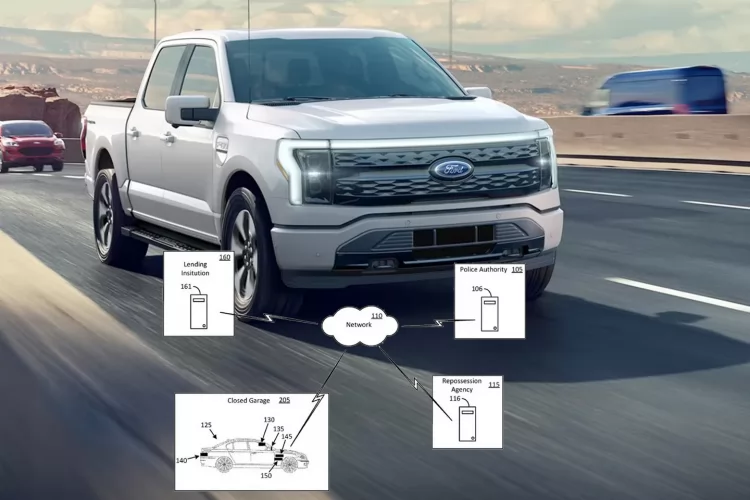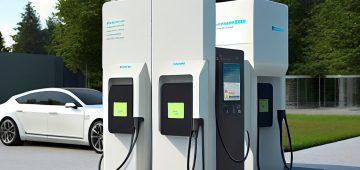Many of you may be wondering how autonomous vehicles (AVs) will impact vehicle maintenance in the coming years. As these smart technologies evolve, they hold the potential to significantly transform your maintenance experience, making it more efficient and cost-effective. AVs promise to minimize human errors and enhance safety, leading to a reduction in accidents and associated repair costs. To explore more about the future of autonomous vehicles (AV) and their implications for maintenance, let’s investigate deeper into this exciting topic.
Key Takeaways:
- Predictive Maintenance: Autonomous vehicles will utilize advanced data analytics and real-time monitoring to implement predictive maintenance, minimizing unexpected breakdowns and enhancing vehicle longevity.
- Service Efficiency: Automated systems can optimize service schedules and reduce downtime, leading to a more efficient maintenance process and ultimately lowering operational costs.
- Technological Integration: The integration of AI and IoT technologies in autonomous vehicles will transform maintenance routines, allowing for automated troubleshooting and streamlined repairs.
The Evolution of Autonomous Vehicles
Historical Overview
Along the journey of automotive innovation, the concept of autonomous vehicles has been an intriguing topic that dates back to the early 20th century. The first steps towards automation began with experiments on vehicles that could be controlled remotely or driven with limited human interaction. Notably, in the 1930s, a radio-controlled car performed a demonstration, showcasing the potential for vehicle autonomy. As technology advanced, the 1980s saw the emergence of prototypes like Carnegie Mellon University’s Navlab, which utilized computer vision and sensor data to navigate roads.
By the turn of the century, research and development accelerated, propelled by advances in computing power and artificial intelligence. Major car manufacturers, along with tech giants, began investing heavily in autonomous technology. The public witnessed significant milestones, such as Google’s Self-Driving Car project in 2009, which brought heightened awareness and enthusiasm about the future possibilities of self-driving vehicles.
Current Technological Advancements
Current trends in autonomous vehicle technology are shaping the landscape of the automotive industry. You are likely familiar with the various levels of automation defined by the Society of Automotive Engineers (SAE), ranging from Level 0 (no automation) to Level 5 (full automation). Today’s vehicles, equipped with advanced sensors, machine learning algorithms, and real-time data processing capabilities, can perform tasks such as adaptive cruise control and lane-keeping assistance which serve as build-ups to complete autonomy.
The advancements you see today in connectivity also play a vital role. Vehicles are becoming increasingly integrated with the Internet of Things (IoT), allowing for improved data exchange between vehicles, infrastructure, and users. This means that your vehicle can not only communicate vital information but also make informed decisions based on real-time traffic conditions. The adoption of 5G technology is further enhancing these capabilities, enabling your autonomous vehicle to receive and process data at unprecedented speeds, no longer limited by traditional communication networks.
The presence of LiDAR, radar, and advanced camera systems in modern autonomous vehicles enhances their ability to interpret surroundings and make split-second decisions. As technology pushes forward, vehicles are being designed with redundancy systems to ensure safety, thereby making your rides not just efficient but also secure. The ongoing developments promise not only to redefine how you experience driving but also to revolutionize the future of vehicle maintenance and servicing paradigms.
Maintenance Paradigms
Traditional Vehicle Maintenance Practices
By being a vehicle owner, you are likely familiar with the traditional maintenance practices that have been the norm for decades. Regular oil changes, tire rotations, brake inspections, and annual safety checks are typical services that keep vehicles running smoothly. You might have relied on a local mechanic or dealership to ensure your vehicle meets necessary performance standards and safety regulations. This routine maintenance not only prevents unexpected breakdowns but also extends the life of the vehicle, ensuring it operates efficiently over the years.
By adhering to these practices, you also engage in a relationship with your vehicle that fosters familiarity and trust. You monitor performance issues, pay attention to warning lights, and make appointments for repairs as needed. In many ways, you have wielded a certain level of control and responsibility for your vehicle’s functionality, navigating the nuances of maintenance schedules and the somewhat predictable wear and tear associated with traditional mechanical systems.
Emerging Maintenance Challenges for Autonomous Vehicles
Across the rapidly evolving landscape of autonomous vehicles, you will encounter a set of unique maintenance challenges that distinguish themselves from traditional methods. These vehicles are equipped with highly sophisticated technologies, sensors, and software systems that require a different approach to maintenance. Unlike conventional cars, which often rely on mechanics for physical repairs, autonomous vehicles will increasingly call for expertise in software updates, diagnostics, and system calibrations. As you embrace this technology, you’ll find that your maintenance needs may shift from physical repairs to digital solutions.
Across the spectrum of autonomous vehicles, you may face issues related to software failures, sensor malfunctions, and even cybersecurity threats that can impact vehicle performance. The interplay between hardware and software creates a complex ecosystem where you must ensure that both facets function harmoniously. The challenge lies in ensuring that various systems are regularly updated and protected against potential breaches, with a focus on maintaining reliability and safety in automated driving conditions. Furthermore, the shift to predictive maintenance, leveraging data analytics to foresee issues before they arise, will become an important part of vehicle upkeep in the future.
To meet these emerging maintenance needs, you will require a shift in your understanding of vehicle care. Consider engaging with professionals who specialize in the new technologies and systems that autonomous vehicles utilize. Keeping up with software updates and technological advancements will be important to ensure your vehicle remains not only functional but also safe. By prioritizing this knowledge and staying informed, you can adapt to the challenges presented by autonomous vehicles and embrace the future of mobility with confidence.
Envisioning Future Maintenance Solutions
Once again, the automotive landscape is set to undergo a monumental transformation, thanks in large part to the advancements in autonomous vehicle technology. As vehicles become more sophisticated, the approach to maintenance will also need to evolve dramatically. The integration of cutting-edge systems will redefine not only how you care for your vehicle but also enhance safety and efficiency in the transportation ecosystem. Within this changing landscape, two pivotal aspects emerge: predictive maintenance technologies and the role of data analytics in maintenance solutions.
Predictive Maintenance Technologies
Future maintenance strategies for autonomous vehicles will primarily revolve around predictive maintenance technologies. Rather than relying on routine inspections or reactive measures when a problem arises, these vehicles will be equipped with advanced sensors and algorithms that monitor your vehicle’s performance in real-time. By analyzing data patterns and operational history, predictive technology can forecast potential malfunctions before they occur, allowing you to address issues proactively and minimize unexpected breakdowns.
Role of Data Analytics in Maintenance
To fully harness the power of predictive maintenance, you will increasingly depend on data analytics. The intelligent evaluation of data collected from various sensors embedded in your autonomous vehicle will be key to understanding its health and performance. With continuous monitoring, you can anticipate when components may need servicing and avoid serious operational failures. This data-driven approach not only extends the longevity of your vehicle but also ensures that you maintain optimal performance and safety.
Considering the vast amounts of data generated by autonomous vehicles, the role of data analytics becomes increasingly pivotal. By converting raw data into actionable insights, you can significantly enhance your maintenance strategies. The insights provided will allow you to track the performance of key components, predict when maintenance is necessary, and even inform you about potential upgrades that could increase efficiency. This focus on data analytics empowers you to streamline your vehicle’s upkeep, ensuring that your autonomous driving experience is as seamless and safe as possible.
Implications for Service Providers
Many service providers in the automotive sector are beginning to understand the significant shifts that autonomous vehicles (AVs) will bring. As the technology advances, your role as a service provider will need to adapt not only to the vehicles themselves but also to the new business landscape they create. This transition could lead to exciting opportunities, but it also demands you to rethink your current business practices to stay relevant.
New Business Models
After the widespread adoption of autonomous vehicles, traditional maintenance models may become obsolete. You may find that services shift from reactive maintenance, which focuses on fixing issues as they arise, to proactive and predictive maintenance, leveraging data-driven insights gained from AV operations. This new model provides you with the chance to offer subscription-based services or packages to vehicle owners, encouraging a consistent revenue stream while enhancing customer satisfaction.
Additionally, the rise of shared mobility services will change your client base. As car ownership declines, businesses and fleet operators may require comprehensive maintenance solutions rather than individual consumer-focused services. You will need to develop partnerships and tailor your offerings to meet the dynamic demands of these new customers, positioning your service as a key player in the AV ecosystem.
Training and Workforce Development
The advent of autonomous vehicles brings about significant changes in the skill sets required for service providers. Your team will need to be well-versed in both the mechanical and digital aspects of these advanced technologies. Training programs must evolve to encompass software diagnostics, data analysis, and AI integration alongside traditional automotive repair skills.
Hence, investing in continuous learning and development will be necessary for your workforce. By providing access to specialized training sessions and certifications, you can equip your team with the necessary skills to handle the complexities of AV maintenance. Additionally, nurturing a culture of adaptability and innovation within your organization will empower your employees to keep pace with technological advancements, setting your services apart in a competitive landscape.
Final Words
Upon reflecting on the impact of autonomous vehicles on maintenance practices, you can envision a landscape where vehicle upkeep becomes more efficient and streamlined. With the integration of advanced technology and real-time monitoring systems, your vehicle could continuously analyze its own condition, notifying you of any potential issues before they escalate. This proactive approach to maintenance not only enhances your safety on the road but also extends the lifespan of your vehicle, making it a sound investment for your future.
As you consider the possibilities, it’s clear that autonomous vehicles are not just about enhancing driving experiences but also about redefining the way you approach vehicle maintenance. With features like automated diagnostics and predictive maintenance alerts, the need for traditional service interventions may diminish. Embracing this shift encourages you to stay ahead of the curve, ensuring that your vehicle operates at its best while minimizing downtime and costs associated with repairs. As the future unfolds, being informed about these changes empowers you to make smarter choices in vehicle ownership.
Q: How will the maintenance needs of autonomous vehicles differ from traditional vehicles?
A: Autonomous vehicles (AVs) will require a shift in maintenance focus due to their advanced technology and operational systems. Unlike traditional vehicles that primarily need regular oil changes, tire rotations, and brake inspections, AVs will demand more frequent software updates, sensor calibrations, and cybersecurity checks. This means that maintenance providers will need specialized training and equipment to handle the unique systems that govern AV performance. Additionally, as AVs can gather and analyze operational data in real-time, predictive maintenance may become more commonplace, allowing for proactive service rather than reactive repairs.
Q: What impact will autonomous vehicles have on the automotive repair industry?
A: The rise of autonomous vehicles is expected to significantly reshape the automotive repair industry. With fewer human-driven vehicles on the road, traditional repair shops may see a decrease in business for common issues that result from standard driving. However, the demand for high-tech repair services, focusing on the electronics, sensors, and software that manage AV operations, is likely to increase. This shift will require technicians to adapt to new technologies and methodologies, leading to an increased need for specialized training programs and certifications tailored to AV maintenance.
Q: Will the ownership model of vehicles change with the introduction of autonomous vehicles?
A: Yes, the ownership model of vehicles is anticipated to evolve as autonomous vehicles become more prevalent. Many experts suggest that shared mobility services, like ride-hailing or vehicle sharing, may grow in popularity, as individuals may prefer to access AVs on an as-needed basis rather than owning their own vehicles. This shift could lead to a decrease in the total number of vehicles on the road, which in turn could affect maintenance practices. Fleet management will become key, requiring regular maintenance checks and service for multiple vehicles simultaneously, transforming the way maintenance is executed and scheduled in urban environments.



